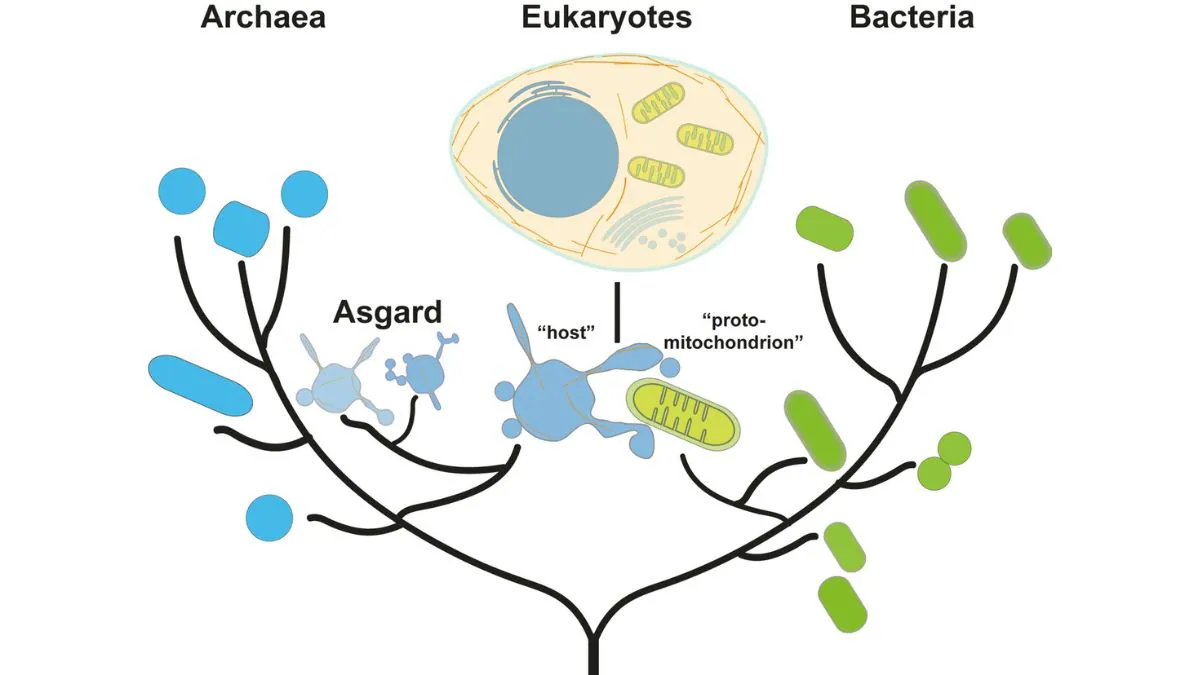Asgard Archaea: Key to Understanding Complex Life

A groundbreaking study has spotlighted Asgard archaea, a group of single-celled organisms that may hold the key to understanding the evolution of complex life forms. First identified through gene fragments in deep-sea sediments, these microbes have been classified as a distinct subgroup within archaea. Researchers now propose that eukaryotes, organisms with a nucleus, may have evolved from these ancient microbes, challenging the traditional three-domain model of life that separates bacteria, archaea, and eukaryotes.
Findings from Recent Studies
Recent research published in the journal Cell by a team from ETH Zurich has provided new insights into the cellular structure of Asgard archaea, particularly focusing on a species known as Lokiarchaeum ossiferum. Led by Professor Martin Pilhofer, the study highlights the discovery of a unique actin protein termed Lokiactin. This protein bears similarities to actin found in eukaryotic cells and is responsible for forming filamentous structures that contribute to the complex architecture of these microbes. Postdoctoral researchers Jingwei Xu and Florian Wollweber utilized advanced microscopy techniques to confirm the role of these structures, marking a significant step in understanding the cellular makeup of Asgard archaea.
Microtubules in Asgard Archaea
While previous studies had established the presence of actin filaments in Asgard archaea, the existence of microtubules remained uncertain until now. The latest findings reveal that these archaea produce tubulin proteins that form microtubule-like structures, albeit on a smaller scale compared to those found in eukaryotic cells. Unlike the more widely observed actin filaments, these tubulins were detected in only a select few species. Although their exact function is still under investigation, researchers speculate that these microtubules may play a role in intracellular transport, further complicating our understanding of the cellular functions in these ancient organisms.
Implications for Evolutionary Biology
The implications of these findings extend far beyond the realm of microbiology. Scientists suggest that the cytoskeleton of Asgard archaea could have been pivotal in the emergence of eukaryotic life. One prevailing theory posits that an Asgard archaeon may have engulfed a bacterium, which eventually evolved into mitochondria, a crucial component of eukaryotic cells. Professor Pilhofer emphasized in the study that these cytoskeletal structures might have facilitated interactions between archaea and bacteria, paving the way for the evolution of complex eukaryotic cells. Ongoing research aims to delve deeper into the proteins and cellular functions of these intriguing microbes, potentially reshaping our understanding of life’s evolutionary history.
Observer Voice is the one stop site for National, International news, Sports, Editor’s Choice, Art/culture contents, Quotes and much more. We also cover historical contents. Historical contents includes World History, Indian History, and what happened today. The website also covers Entertainment across the India and World.

